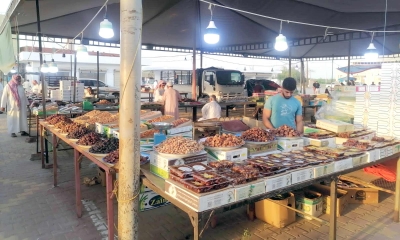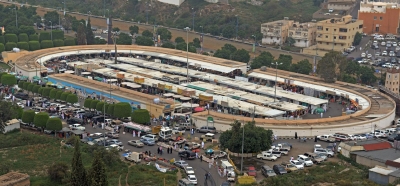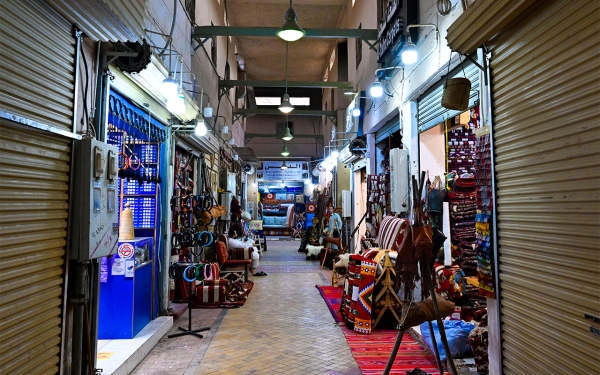
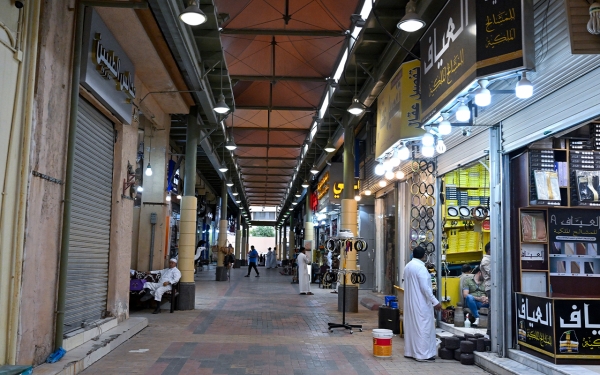
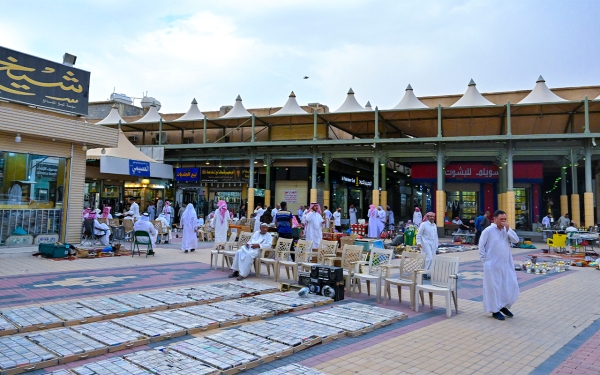

Souq al-Zal, is a popular market near al-Hukm Palace area in Riyadh city, the capital of the Kingdom of Saudi Arabia, specifically between Tariq Bin Ziad Street to the south and Sheikh Mohammed Bin Abdulwahab Street to the west, and Sheikh Mohammed Bin Ibrahim Street to the east. The market is linked to the commercial and economic movement in Riyadh city. It is 38,580 m in area.
Souq al-Zal is a heritage and tourist destination. Goods sold there include archaeological collectibles and antiques, carpets (al-Zal), locally made footwear, Mishlahs (Bishts), swords, oud, perfumes, and top-quality saffron.
Souq al-Zal facilities
Souq al-Zal in Riyadh includes the Sheikh Mohammed Bin Ibrahim Al Asheikh Mosque, whose courtyards and men’s prayer hall can accommodate about 1,800 worshipers, in addition to the women’s prayer hall, which can accommodate about 180.
The market includes Dakhna Square, which was designed to visually link architectural elements with service institutions. The square is one of Riyadh city's most important squares, both historically and in the present day.
Selling Mishlahs in Souq al-Zal
Souq al-Zal is famous for its Mishlahs trade; customers go there to buy al-Mishlah or al-Bisht. Some shops sell ready-made bishts, while others customize them to be bespoke. The Mishlah is an Arab ornamental garment associated with the Arab Gulf in general. It is worn on special occasions and public holidays, such as summer holidays, weddings, and religious occasions, like Eid.
The Hasawi Bisht is among the market's most famous, followed by the Syrian, Malaki, and al-Tabuq bishts. Prices vary by material and al-Zari (the embroidery on the edge) used, plus where they were manufactured.
The development of Souq al-Zal
The High Commission for the Development of Riyadh (now called the Royal Commission for Riyadh City) worked on making Souq al-Zal a main tourist destination of Riyadh. This was done through the project to improve Souq al-Zal by reorganizing the area's infrastructure, demolishing dilapidated mud buildings, working on paving and shading, and installing lighting for shops and along the sides of the road while keeping the market's heritage identity in mind. Throughout its development stages, the market continued to buy, sell, and conduct other commercial activities.
Related quizzes

